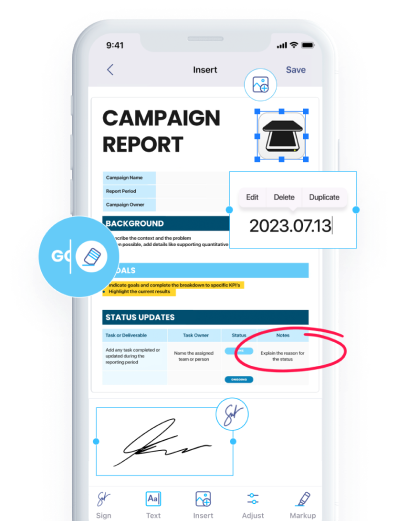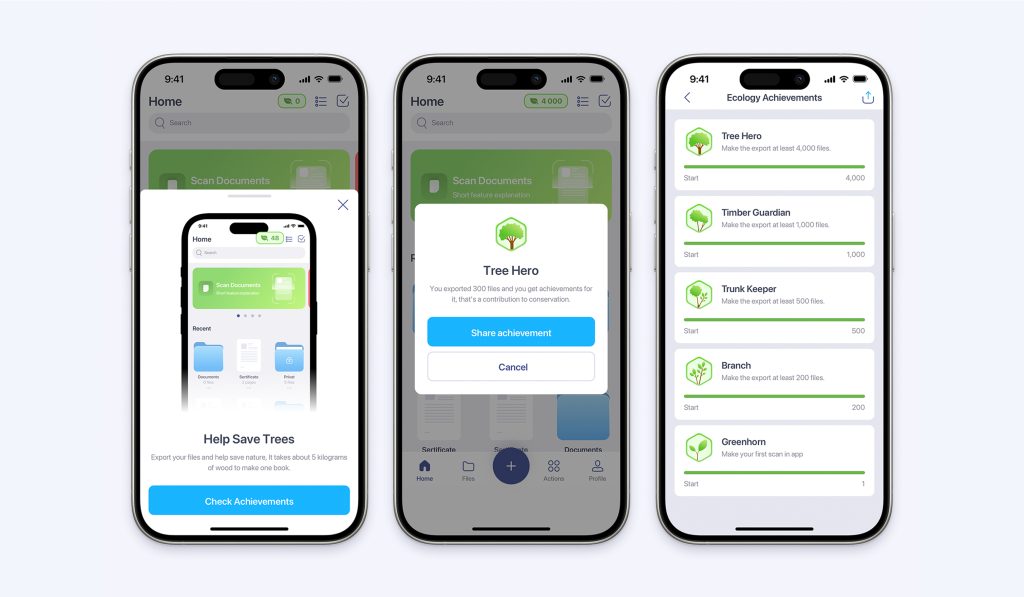

17 mar 2025
Want to make your business more sustainable without spending a fortune? It’s easier than you think. With just a few simple actions, you can reduce waste, save money, and create a positive environmental impact. No audits, no big investments, and no third-party companies. Here’s how to get started with minimal effort and a tiny budget.
A UNDP poll published in June 2024 showed that climate change is a concern for people everywhere. Here are just a couple of figures that speak for themselves:
Since businesses work with people, it’s no surprise that public concerns about the environment also shape consumer behavior and brand perception. Moreover, sustainability provides additional benefits for companies.
One of them is cost control. A McKinsey report says there’s a strong link between how well a company uses resources and its financial performance. The study showed that cutting down on resource costs can boost operating profits by up to 60%. A different study found that businesses that implement and follow their corporate responsibility programs (which focus on environmental preservation as well) have been shown to experience a 20% increase in revenue and a 13% boost of employee productivity.
Here are four key tips for you that will help you make your business greener.
Let’s start with resources, as we’ve already mentioned them. Just imagine that simply switching your office from incandescent bulbs to light-emitting diodes (LEDs) can save up to 80% in energy, significantly reducing costs over time. LEDs also help lower greenhouse gas emissions, which makes them an eco-friendly choice.

You can also cut costs by following these recommendations from the U.S. Department of Energy:
U.S. offices use 12.1 trillion sheets of paper every year. Even if we leave aside the environmental aspect, paper, place, and furniture to store it cost money.
The solution is simple: scan documents instead of making copies. You can shift to digital circulation practically with no expenses. Nowadays, there are plenty of mobile scanning apps that are more convenient and practical than a large office scanner and can handle multifunctional tasks.
Take iScanner, for instance. This tool combines the functions of a scanning app with a PDF editor, allowing you to not only digitize your copies but also create a robust e-document management system. Here’s about the app in detail:
With iScanner, you can also make sustainability a bit more engaging. Its eco-achievements feature tracks how many pages you’ve scanned and converts them into the number of trees saved (so far it’s almost 50K). Moreover, when you hit certain landmarks, you’ll unlock badges and certificates as proof of your environmental impact. Why not print it out and put it on the wall in your office or share it on your company’s social media?

What Else to Do to Reduce Paper Waste
Another simple way is to switch to email receipts and send them directly from your checkout system. The same goes for invoices—email them and encourage clients to print them only if necessary.
Encourage your employees to use ordinary cups instead of paper ones (or at least reuse the paper ones).
If going paperless at all isn’t possible, reuse items when you can. You can give envelopes and folders a second life by simply adding a new label.
The thing with water is the same as with energy—it’s an unnoticeable black hole for your budget. To tackle this, start from the basics. Fix leaking taps, pipes, toilets, or equipment as soon as possible. Even minor issues can waste significant amounts of water.
Updating your restroom is also a sound decision. According to the U.S. Environmental Protection Agency, older toilets can use up to six gallons of water per flush, while modern low-flow models use less than 1.5 gallons.
Aerated taps and flow adaptors will also reduce water waste and lower costs.
It’s important to remember that sustainability isn’t just about following instructions, it’s an ongoing process. That’s why education also plays a key role.
You can send an internal email newsletter every month or two with tips on saving energy and water, or simply a reminder about sustainable practices. Personally signing the newsletter will show the level of your commitment and encourage your employees to follow your example.
For sure, you can’t make your colleagues bike to work, even if you do it yourself. But you can make a bike parking area near the office. It can work as well.
Another idea that doesn’t require a lot of effort is to make a Green Week once a year. That’s a perfect possibility to organize workshops on sustainability and evaluate sustainability progress in comparison with the previous year.
You can also look for second-hand goods on sale. It’s a great way to find second-hand furniture, which is often of better quality than new pieces. If you have items you no longer need, organize a sale yourself and encourage your colleagues to bring things they don’t require. This way, you can earn extra money and give unwanted items a second life.
